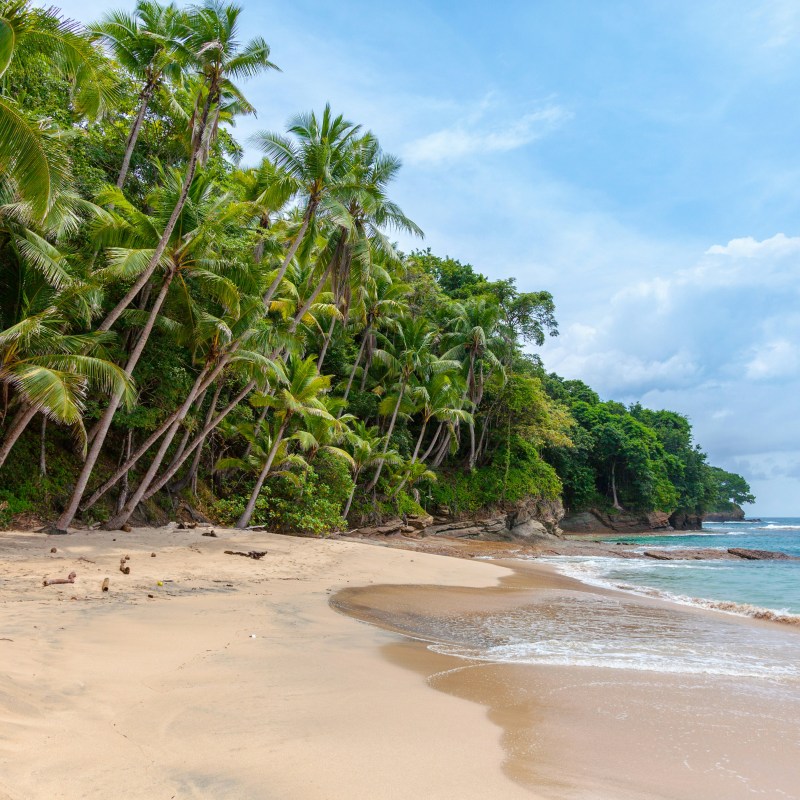
Costa Rica and Panama are two up-and-coming vacation destinations for American travelers.
Videos by TravelAwaits
To be fair, Costa Rica has been on the radar for nature lovers for decades. But its remote resorts and pricey eco-tourism retreats have only recently gone mainstream. In other words, you don’t need to drain your bank account to enjoy all the country has to offer.
Panama, by contrast, is usually associated with its important canal and bustling capital city. Because of this, it’s not as closely tied to nature-driven tourism like Costa Rica.
But that doesn’t mean there aren’t jungles, mountains, and beaches galore in Panama.
In fact, there’s quite a bit of nuance at play in both of these countries. Though they’re more similar than not, there are a few key differences that travelers should keep in mind.
Heading to Central America and want to learn more about the key differences in Costa Rica vs Panama? Let’s dive in.
Panama City has better urban vibes
Costa Rica’s capital city of San Jose is an urban metropolis of around 335,000 people—but it’s much smaller in scale and impact than Panama City, home to around 2.5 million.
In fact, Panama City is one of the most advanced and exciting cities to visit in Central America, on par culturally with Mexican hotspots like Oaxaca City and Morelia.
Most visitors spend a few days exploring Panama City when they land. I recommend zeroing in on the museums.
The city is home to a handful of highly innovative and memorable exhibits, including those at the Panama Canal Museun, the Museo de la Mola, and the BioMuseo. You can learn more about the construction of the canal, textile arts, and the country’s beautiful ecology at these locations.
Costa Rica leads in eco-tourism
Panama City is great for those who like a little city-slicking on their vacation.
But the city doesn’t hold a candle to the natural wonders in Costa Rica.
While Panama is home to beaches, mountains, jungles, and volcanoes that are worth visiting (more on these below), the countries have taken vastly different approaches to preserving nature.
Most of Panama’s eco-initiatives are new and unproven. By contrast, around 30% of all Costa Rica’s landmass is protected as part of a reserve. It’s home to stretches of primary jungle—some of the last in the world—and its eco-tourism initiatives are actively involved in this type of preservation.
Back in 1986, the government of Costa Rica adopted a long-term plan to not only prevent deforestation but to actively restore forests. By 2011, these initiatives had helped restore forest cover in the country by more than 50%—more than double from 1986.
That means that travelers in Costa Rica can easily book hotels, resorts, and other lodgings that are integrated into the environment. They’re sustainably operated and designed to introduce tourists to local jungles without causing undue stress on the plant life or wildlife.
Costa Rica offers more adventure tourism
Costa Rica’s emphasis on eco-tourism has led to a unique range of adventure tourism.
In fact, it was one of the first countries to add zip-lining and bungee-jumping to its roster of tourist activities. You can do either in dozens of spots around Costa Rica, from its Caribbean beaches to its central mountains.
Plus, you’ll also notice water adventures like like white water rafting, surfing, and even diving with whale sharks—if that’s your thing, of course.
In general, this is because Costa Rica has more infrastructure for tourists. They’ve been coming in droves for longer than in Panama. That means more adventures to choose from—and dozens of companies are ready to help you select a favorite.
In Panama, by contrast, these experiences are a bit harder to come by. You can find jungle treks, canopy tours, and even rock climbing—but you’ll be traveling cross-country to do so.
Panama offers rustic island experiences
If there’s one thing that Panama has more of, it’s remote islands.
Bocas del Toro, for example, is a famous archipelago located on the Caribbean coast. This area is known for being a sleepy and semi-hidden tropical gem.
(When I was there ten years ago, I met a driftwood sculptor who taught me the secret of the universe. I think that paints a pretty good picture of the types who end up in these sleepy villages.)
In general, you’ll notice there are fewer resorts in Panama versus in Costa Rica. Though this is changing rapidly, Panama still has a few outposts that backpackers like to whisper about. Though I haven’t been to Panama in over a decade, I distinctly remember this rustic beach vibe on its coasts.
On offer in both: indigenous culture & great coffee
There are two experiences that you can find in either Costa Rica or Panama: the chance to learn about indigenous life and drink delicious coffee.
As mentioned above, Panama City is home to the Museu de la Mola, which showcases indigenous textile art from the Guna people. It’s far from the only way to get to know Panama’s original inhabitants, too.
During my time at university in Costa Rica, I visited the BriBri tribe in Guanacaste, where we learned about cosmology and cacao. You can easily set up trips to meet with local tribes, which have created small programs and activities for outsiders. (Pro tip: bring a small souvenir from home to share.)
In terms of coffee, you’ll also find world-class cups of joe just about anywhere you wander. Seriously, whether at a coffee plantation, five-star hotel, or bus stop, you’re going to be treated to some seriously delectable coffee.
FAQs
Which currencies do you need for each country?
In Costa Rica, locals use the colón currency. In Panama, it’s the balboa. However, you can use US dollars at most resorts and larger establishments in either country. I recommend keeping both currencies on you.
Is Costa Rica vs Panama safe for visitors?
Yes, Costa Rica and Panama are considered safe for visitors. However, it’s also recommended that you be careful when traveling in either country. The more urban the area, the more visitors are advised to be on their guard. The same for walking around at night. However, most resorts have security teams that guard the grounds.
When is the best time to visit Costa Rica vs Panama?
The best time to visit Costa Rica and Panama in terms of weather is during the dry season from December to April. You will face the lowest number of rainy days, while also escaping the cold weather in the northern hemisphere.
The best time to visit Costa Rica and Panama in terms of budget travel is during the rainy season, from May through November. Because you might face inclement rain showers, most hotels and tours are offered at a cheaper price. I spent a good amount of time in Costa Rica during the rainy season; most showers were intense, but let up quickly.
